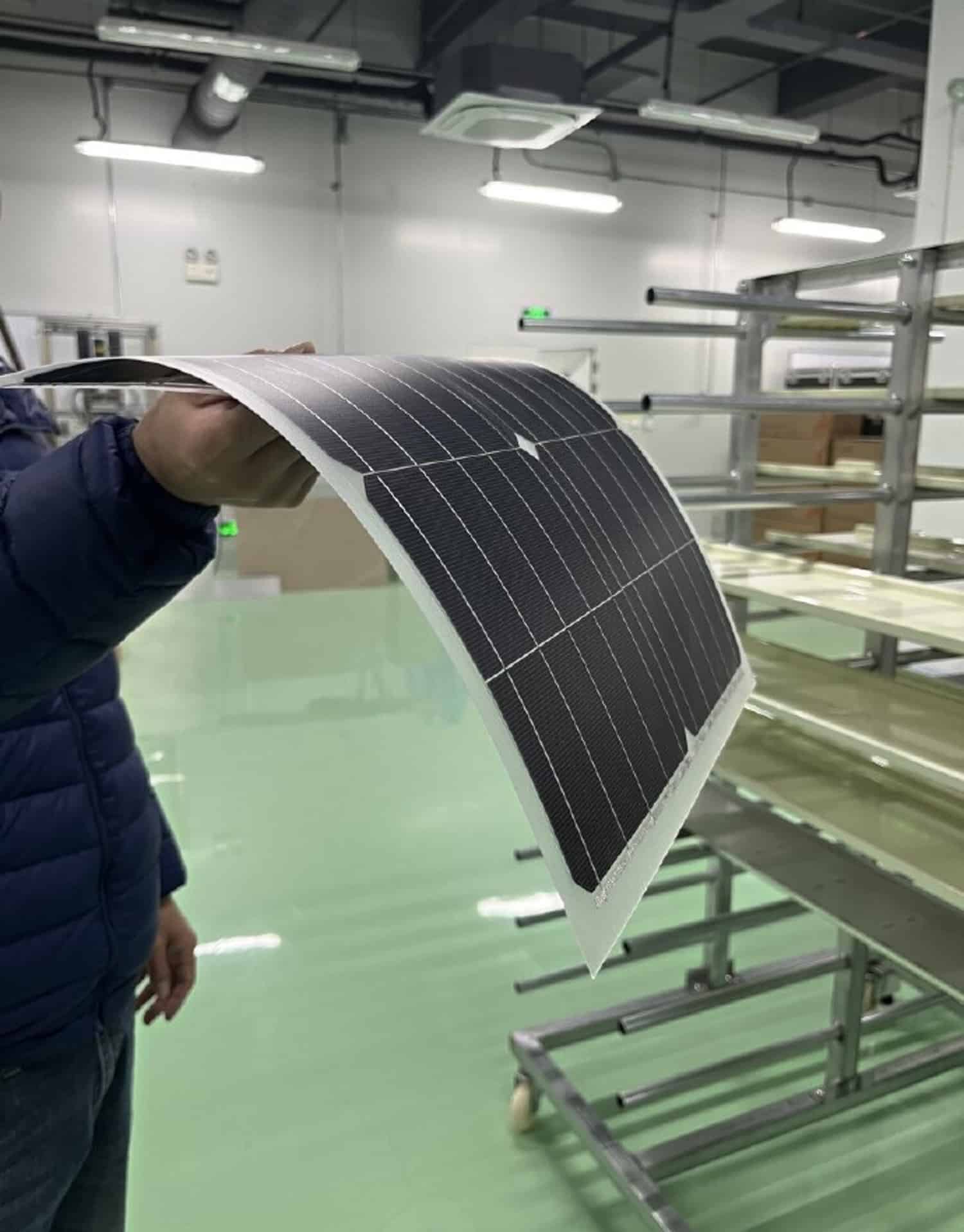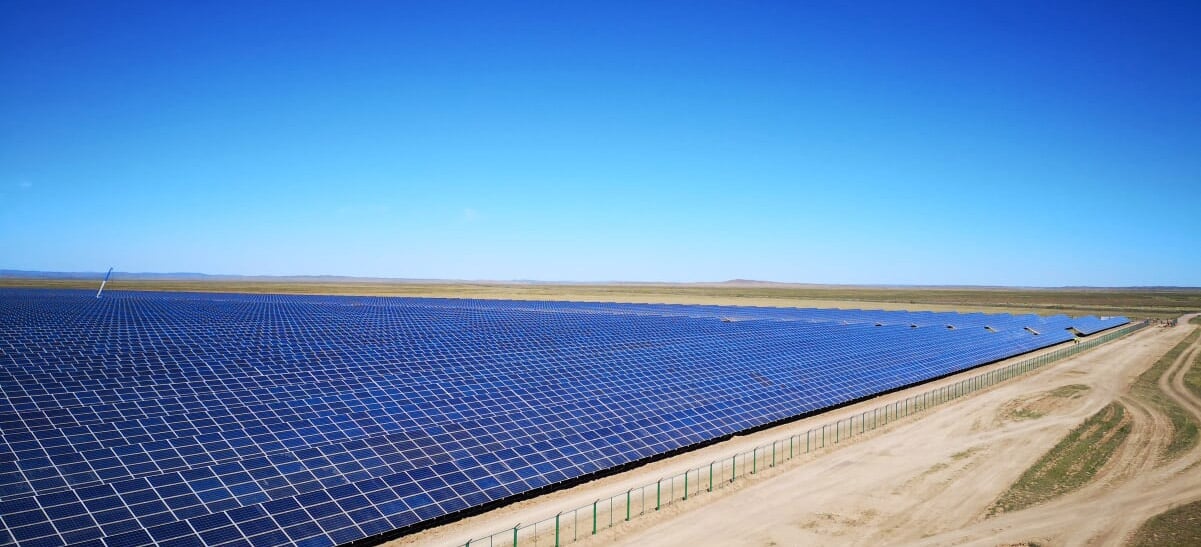
Researchers from China, Germany, and Saudi Arabia have developed flexible silicon solar cells that can bend like paper and retain 96.03% of their 24% power conversion efficiency after 20 minutes of simulated wind exposure. These cells are resilient to temperature changes, losing only 0.38% efficiency after cycling between -70°C and 85°C for two hours. The flexibility was achieved by blunting crack-initiating interfaces on the silicon wafers, resulting in a microscopic network of cracks that allows them to bend. The treated wafers were used to make heterojunction solar cells with a power conversion efficiency of up to 23.4% and an anti-reflective coating that increases efficiency to 24.6%. These flexible cells are suitable for building-integrated and car-integrated photovoltaics, paving the way for advancements in solar energy technology.
- Researchers from China, Germany, and Saudi Arabia have developed flexible silicon solar cells.
- They achieved flexibility by blunting crack-initiating interfaces on the silicon wafers, resulting in a microscopic network of cracks.
- They are suitable for building-integrated and car-integrated photovoltaics.
Overcoming the rigidity of silicon solar cells
Traditional silicon-based solar cells, which make up 95% of the market, have long been known for their efficiency in converting sunlight into electricity. However, their inherent rigidity and brittleness have limited their application on undulating or flexible surfaces. Alternative thin-film solar cells made from materials such as amorphous silicon, Cu(In,Ga)Se2, CdTe, organics, or perovskites have therefore emerged as potential solutions. Unfortunately, these alternatives often suffer from low power conversion efficiency, chemical instability, and the use of toxic or scarce elements.

To address these challenges, a team of researchers led by Wenzhu Liu from the Shanghai Institute of Microsystem and Information Technology, Chinese Academy of Sciences, aimed to develop a flexible yet efficient silicon solar cell. They discovered that textured crystalline silicon wafers tend to crack at specific sharp interfaces formed by pyramid-shaped features on their edges. By using chemical and plasma etching to blunt these crack-initiating interfaces, the researchers were able to create a microscopic network of cracks in the wafers, which then became flexible.
From rigid wafers to flexible solar cells
With the treated silicon wafers now flexible, the research team proceeded to fabricate heterojunction solar cells. When assembled into large flexible modules with an area exceeding 10,000 cm2, these cells demonstrated a power conversion efficiency of up to 23.4%. The application of an anti-reflective coating based on magnesium fluoride further boosted their efficiency to 24.6%.
These flexible silicon solar cells have several advantages over traditional rigid cells and their thin-film counterparts. Not only do they maintain a high power conversion efficiency, but they also exhibit resistance to vibrations, repeated bending, and extreme temperature fluctuations. This makes them ideal for large-scale, lightweight, and flexible solar modules that can be integrated into buildings and vehicles.
Potential applications and future developments
Flexible silicon solar cells open up new possibilities for solar energy deployment. Building-integrated photovoltaics (BIPV) can benefit from these flexible cells, as they can be installed on curved surfaces or integrated into building materials, such as windows or façades. Car-integrated photovoltaics (CIPV) can also take advantage of these cells, enabling vehicles to generate electricity from sunlight and reducing their reliance on fossil fuels.

Moreover, the technology has the potential for large-scale commercial production of high-performance flexible silicon solar cells, contributing to the growth of the flexible cell market and further increasing the adoption of solar energy worldwide.
Addressing current limitations
While the flexible silicon solar cells have shown impressive results in terms of efficiency, flexibility, and resilience, they are not yet robust enough to withstand high-speed hailstones. The research team is actively working to address this limitation and improve the durability of the cells to ensure their suitability for a wide range of applications and environments.
As the demand for renewable energy sources continues to grow, the development of flexible silicon solar cells marks a significant step forward in the field of solar energy. With further research and innovation, these bendable cells have the potential to revolutionize how we harness the power of the sun, making solar energy more accessible and versatile than ever before.







